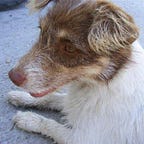Vacationing in Afghanistan
Earlier this year we spent a week of exploring around northern Afghanistan. And to answer the obvious question — because we could.
The journey was mostly organised by Lupine Travel, who arranged the tour with a local guide and provided some support in arranging a visa. Really the only option for flying to Mazari Sharif for a westerner is via Istanbul, and so the trip was scheduled (and rescheduled) around these infrequent flights.
There’s a huge amount of important world history happened in northern Afghanistan, but so much of this is not very well known — even locally. Without a local guide it would have been almost impossible to find some of the places we visited, even if we’d have been allowed to do it.
The majority of the area we visited was in a yellow zone, for which the UK Foreign Office recommends against all but essential travel. There was a trip out into a red zone, which the FCO recommend against all travel, but the situation on the ground changes so rapidly, that these recommendations are more of a rough idea.
Our flight to Mazari Sharif was full of German troops, stationed here as part of UN peacekeeping and coming in to relieve their colleagues. Their local greeters were very surprised to see some tourists mixed up in the chaos, and did their best to point us in the right direction. We arrived very early in the morning, and so we were taken to a local guest house for breakfast and a shower. I’d misread the connection times at Istanbul airport, which were a lot shorter than I thought, and so my luggage didn’t arrive for another few days. But this was fine, because we spent our entire time in local costume to try and blend in more anyway.
Our first visit is to a gate. We were expecting a simple gate to a park maybe, and were very confused. But no, Charkent Gate in Chimtal District is one that has been in place since around 1200 in the time of Genghis Khan. In recent years it has provided protection against both Russian invasion and Taliban forces, which is what makes Mazari Sharif one of the safer places to be in Afghanistan.
We took a walk further up the track to a mostly abandoned village in the foothills of the mountains. In recent years the population have been returning and starting to rebuild, feeling safer than before.
Mazari Sharif itself exists because of the Blue Mosque. Afghanis believe that this is the site of the tomb of Ali, the cousin and son-in-law of Muhammad, the last prophet of Islam. People wanted to live nearby this tomb and so the city started to grow.
Mazari Sharif is now a modern city, with everything you’d expect from a small city including multiple universities. It is now more important than the older city of Balkh, which dated from 5000 BCE.
According to local tradition the city of Balkh was founded by Noah, but other sources suggest the name comes from the ancient city of Bactria. What we do know, is that it is the birthplace of Zoroastrianism and that Alexander the Great was based here for some time. During its prime it was considered the mother of cities, and a great cultural center.
Professional archeologists have been unable to work in Balkh until recently, and so whilst we know how important the city has been there isn’t very much actually visible or known about in any great detail.
Balkh is home to one of the oldest mosques in Afghanistan, the Haj Piyadha. Built in the 9th century on the remains of a Buddhist monastery, it is thought to be the oldest Islamic building in the country. So named because people from all over the region came together here to form caravans for walking to Mecca. The trip took 6–7 months each way on foot, and there are people who made multiple trips.
Balkh’s newer mosque is still fairly old, though unfortunately we were unable to stay here very long for security reasons.
Heading away from Mazari Sharif in the other direction, to the east, we come across Samangan. Now a provincial town, it was an important Buddhist site, and then a Medieval caravan stop.
Coming back from Samangan, we come across a palace used by the last king of Afghanistan. It is currently under renovation, and still needs a lot of work doing. All of the artefacts have been moved to a museum in Kabul, so there isn’t much to see — but it is a beautiful location, and you can tell why the King loved to come here for hunting.
To the north of Mazari Sharif is Uzbekistan. There is a freight train running from Mazari Sharif airport to near the border, and both freight and passenger trains running from the Uzbek side north into Kazakhstan and Russia.
The border crossing is a long bridge across a river, which was fast flowing from the melting snow and ice on the mountains. We saw many trucks crossing the bridge.
And finally, no visit to Afghanistan would be complete without a trip to a Buzkashi match. Players on horseback race across the field, attempting to place a goat carcass in a goal. Extremely chaotic, with as many people playing as feel like, the horses race around the field, into spectators with food sellers running out of the way. One can see why this is known as the most dangerous sport in the world.
Our trip to Afghanistan was a ridiculous adventure that I would highly recommend. Returning to our every-day office job in Leeds was something of a shock to the system after spending a week exploring the country by minibus.
I would highly recommend a trip like this, but maybe work with a local guide directly, and maybe travel there by train.
